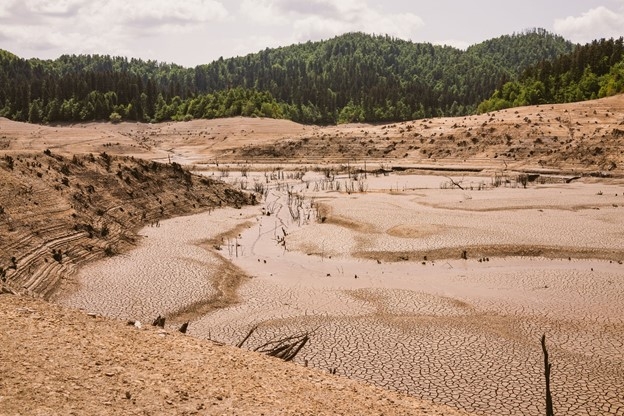Innovations in Water Resource Management: Hyperspectral Imaging for Drought Mitigation

As climate change increases the severity and frequency of droughts, water resource management is critical. Traditional drought-monitoring methods, such as weather forecasting and soil sensors, have limitations. Hyperspectral imaging, however, is revolutionising water resource management by capturing intricate spectral data across vast landscapes, providing insight into critical factors like soil moisture, vegetation health, and water bodies for proactive drought management.
Understanding Hyperspectral Imaging
Hyperspectral imaging is an advanced technology that captures spectral information across a wide range of wavelengths. Unlike traditional imaging systems with limited spectral bands, hyperspectral imaging captures data across hundreds of narrow bands, allowing comprehensive environmental analysis.
Each pixel in hyperspectral imagery contains spatial and spectral information, making it possible to monitor soil moisture, vegetation health, and water quality accurately. For instance, hyperspectral imaging can differentiate between healthy and drought-stressed vegetation, providing critical insights for water management.

Source: Pixxel
Challenges in Water Resource Management
Water scarcity is a global challenge that intensifies as climate change leads to frequent and severe droughts. Agriculture, which consumes 70% of global freshwater, is particularly vulnerable, underscoring the need for efficient efficient water use. Human activities, like deforestation and rapid urbanisation, exacerbate water shortages by disrupting water cycles and depleting groundwater reserves.
As the water demand rises, innovative monitoring and management solutions are increasingly urgent. HSI is emerging as a powerful tool, addressing critical gaps in traditional drought-monitoring approaches.

The spectral bands of the hyperspectral captures come to life in the Saloum Delta, providing a vibrant visualisation of its capabilities over coastal habitats. Source: Pixxel
Hyperspectral Imaging for Drought Mitigation
Traditional drought-monitoring methods lack the precision and scale for proactive management and often miss early drought indicators. Hyperspectral imaging, however, provides high-resolution, near-real-time data, enabling accurate drought detection and resource management.
Key applications of hyperspectral imaging for efficient water management and drought mitigation include:
- Near Real-Time Monitoring: Hyperspectral imaging monitors soil moisture, vegetation health, and groundwater levels in near real-time, identifying water stress in plants. This enables crop health assessments, allowing farmers to adjust irrigation and prevent wastage.

Plant Senescence Index was applied to Pixxel’s hyperspectral imagery of soybean fields in Iowa, USA. Crop areas with a high senescence index (red) indicate high vegetation stress. Source: Pixxel
● Detecting Early Drought Signs: By analysing subtle changes in plant and soil health through spectral profiles, hyperspectral imaging detects early drought signs. Stress indicators, like variations in leaf reflectance, alter managers to apply targeted irrigation, conserving crops and water.
● Agricultural Optimisation: In agriculture, hyperspectral imagery helps optimise irrigation by identifying the specific water needs of crops. This enables farmers to deliver water precisely where and when it’s needed, reducing waste, improving yields, and enhancing resource allocation during dry seasons.
Real-World Application
A 2015 study demonstrated the value of hyperpsectral imaging during California’s 2013-2014 drought. Researchers used hyperspectral and thermal infrared imagery to assess drought impacts on local plant species, calculating a relative green vegetation fraction (RGVF) from Airborne Visible Infrared Imaging Spectrometer (AVIRIS) data.

The study region covers the Santa Barbara Coast and portions of the Santa Ynez Mountains and Santa Ynez Valley, California. An AVIRIS image acquired in July 2011 is shown in a false-colour composite of 1651 nm (red), 831 nm (green), and 658 nm (blue).
Findings showed that deeply rooted tree species experience minimal drought-related changes, whereas coastal sage scrub plants showed significant seasonal fluctuations and long-term declines. Declining RGVF correlated with higher land surface temperatures, highlighting hyperspectral imaging’s role in understanding drought effects on ecosystems.
Future Prospects and Challenges
The future of hyperspectral imaging in drought mitigation is promising, as sensor technology and data-processing capabilities evolve. However, several challenges remain. High sensor costs make hyperspectral imagery inaccessible to smaller organisations, and large data volumes require sophisticated processing and skilled interpretation.
Fortunately, manufacturing advancements are making hyperspectral imaging more accessible and affordable, likely broadening its adoption across governments, farmers, and environmental organisations.
Newspace companies like Pixxel are leading the way with hyperspectral imaging satellites offering high-resolution images and spatial accuracy, enabling precise water management.
Connect their sales team to explore how Pixxel's cutting-edge technology can benefit drought mitigation efforts.
FAQs
1.How does hyperspectral imaging aid drought mitigation?
Hyperspectral imaging provides detailed data on soil moisture and vegetation health, enabling early detection of drought stress.
2.Why is hyperspectral imaging more effective than traditional methods?
Unlike traditional tools, hyperspectral imaging captures high-resolution spectral data across multiple bands, allowing precise monitoring in near real-time.
3.What are some applications of hyperspectral imaging in agriculture?
Hyperspectral imaging optimises irrigation by monitoring crop health, detecting early drought stress, and improving water efficiency.
4.What challenges exist for hyperspectral imaging?
Hyperspectral technology is costly, and handling large data volumes requires advanced processing and expertise.
5.How does hyperspectral imaging detect early signs of drought?
Hyperspectral imaging identifies subtle changes in plant reflectance and soil health, indicating early water stress and allowing for proactive management.
- Questions and Answers
- Opinion
- Motivational and Inspiring Story
- Technology
- Live and Let live
- Focus
- Geopolitics
- Military-Arms/Equipment
- Sécurité
- Economy
- Beasts of Nations
- Machine Tools-The “Mother Industry”
- Art
- Causes
- Crafts
- Dance
- Drinks
- Film/Movie
- Fitness
- Food
- Jeux
- Gardening
- Health
- Domicile
- Literature
- Music
- Networking
- Autre
- Party
- Religion
- Shopping
- Sports
- Theater
- Health and Wellness
- News
- Culture

